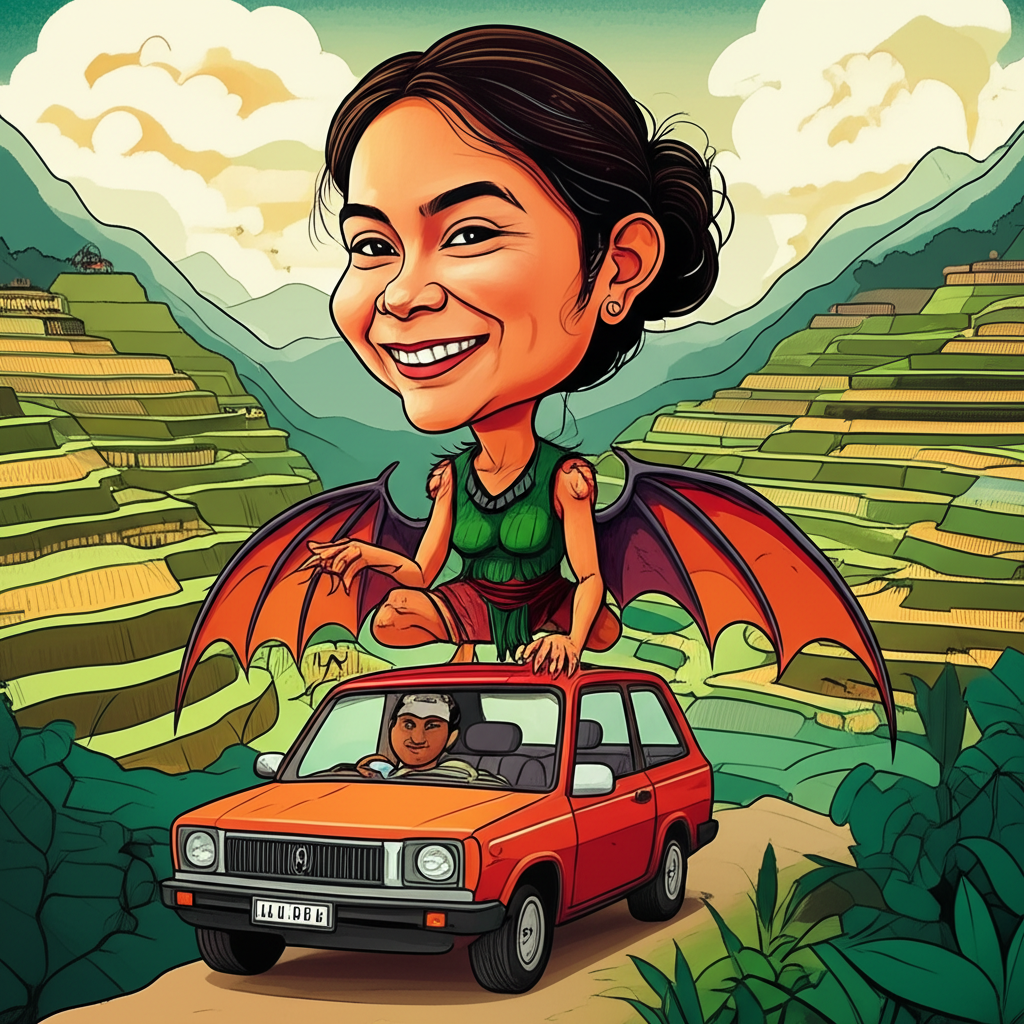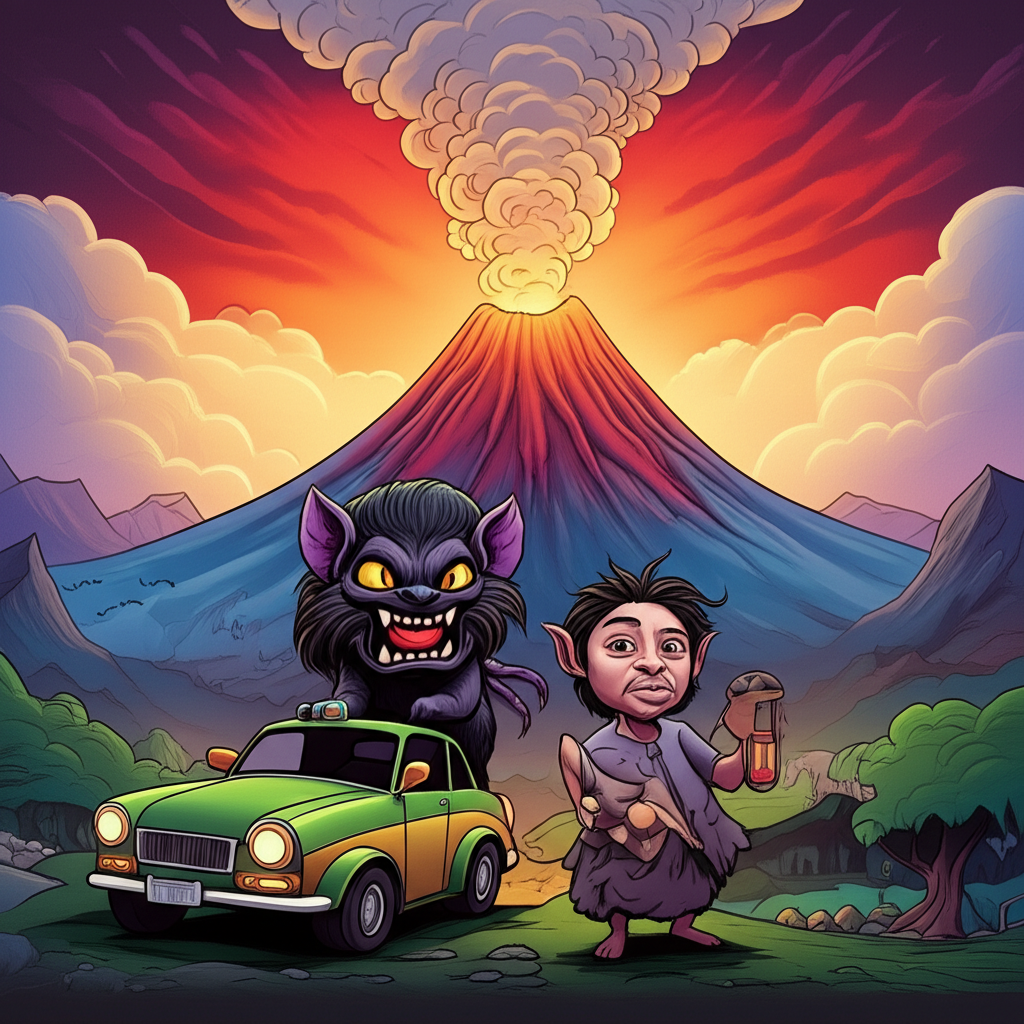
In the verdant heart of the Philippines, where mist-laden mountains kiss the sky and ancient forests hum with untold stories, lies a tapestry woven from the threads of myth and folklore. For generations, the tales of Bathala, the supreme deity in pre-colonial Filipino belief systems, and the formidable presence of Mount Makiling have intertwined with the chilling narratives of the Aswang, a creature of shadow and fear. These are not mere ghost stories; they are echoes of a past, whispers from an era when the natural world was imbued with spiritual significance, and the unseen held as much sway as the tangible.
A World of Spirits and Guardians: Origins and Cultural Background
Long before the advent of modern religions, the indigenous peoples of the Philippines lived in close communion with nature. Their understanding of the world was deeply animistic, believing that spirits inhabited everything – the towering trees, the flowing rivers, the very mountains themselves. Bathala, the benevolent creator and sustainer, presided over this spiritual realm, a distant yet omnipresent force. However, for the day-to-day lives of the people, the more immediate spirits, both benevolent and malevolent, were the focus of their beliefs and rituals.
This was a time of profound respect for the land, a time when the cycle of life and death was intimately understood through the rhythms of agriculture and the unpredictability of the natural world. Fears of the unknown, of the darkness that lurked beyond the safety of the village firelight, found expression in the creation of beings that embodied these anxieties. The dense forests, the brooding mountains, and the deep, shadowed valleys became the natural abodes for these mythical entities, shaping the very landscape into a canvas for their legends.
The Forest’s Embodiment: Mount Makiling and its Guardian
Mount Makiling, a majestic dormant volcano in Laguna province, stands as a towering sentinel, its slopes cloaked in lush vegetation. In the realm of folklore, this mountain is not merely a geological formation; it is a sacred entity, often personified as a powerful and beautiful diwata (a spirit or deity). Known as Maria Makiling, she is depicted as a benevolent protector of the mountain and its inhabitants, a guardian who bestows blessings upon those who respect her domain and punishes those who defile it.
Maria Makiling is often described as a maiden of ethereal beauty, her presence felt in the cool mountain breeze, the scent of blooming flowers, and the abundance of the forest’s bounty. She is a symbol of nature’s nurturing power, of its generosity and its ability to sustain life. However, she also possesses a formidable temper, capable of unleashing the mountain’s fury upon those who disrespect its sanctity. Her stories often involve her intervening in human affairs, sometimes guiding lost travelers, other times exacting vengeance on those who exploit the natural resources of her domain.
The Shadow in the Night: The Aswang
In stark contrast to the protective spirit of Maria Makiling, the Aswang represents the primal fears that gnawed at the edges of ancient Filipino communities. The Aswang is not a singular entity but a category of shapeshifting creatures, often associated with the night and preying on unsuspecting humans, particularly children and the vulnerable. Descriptions vary across regions and stories, but common traits include the ability to transform into animals like dogs or birds, to detach their upper bodies to fly in search of prey, and to possess insatiable hunger.
Symbolically, the Aswang embodies the darkness that threatens the light, the predatory instincts that lie hidden within the natural world, and the dangers that lurk beyond the perceived safety of the community. They are often depicted as embodying vices like greed and cruelty, serving as a moral counterpoint to the virtues of community and selflessness. The fear of the Aswang served as a powerful tool for social control, encouraging vigilance and adherence to community norms, as venturing out alone at night or straying too far from the village could invite dire consequences.
The Intertwined Narrative: A Tale of Protection and Peril
Imagine a time when the moon cast long, dancing shadows across the foothills of Mount Makiling. The villagers, their homes illuminated by flickering lamplight, would gather around the hearth, their voices hushed as they shared stories.
"The mountain sleeps," an elder might begin, his voice a low rumble, "but its heart beats with the spirit of Maria Makiling. She watches over us, her gentle hands guiding the rains and nurturing the crops. She is the mother of this land."
But then, as the wind outside began to howl, a different tone would creep into the narrative. "Yet, in the deepest shadows, where the moonlight fears to tread, there are other whispers. The Aswang stirs. It wears the guise of a lost dog, a fleeting bird, but its eyes burn with an ancient hunger."
The story might then weave a tale of a young child, drawn by the allure of the night sky, venturing too close to the edge of the forest. Suddenly, the familiar chirping of crickets would be replaced by an unnatural silence. A shadow, impossibly long and distorted, would detach itself from the trees. The child, sensing a chilling presence, would cry out.
In the distance, high on Mount Makiling, a soft glow might emanate from the peak. It is said that Maria Makiling, sensing the encroaching darkness, would unleash her power. Perhaps a sudden gust of wind would scatter the Aswang, or a blinding flash of light would momentarily disorient it, giving the child a chance to flee back to the safety of their home.
Or perhaps the story would focus on a brave hunter, venturing into the forest to protect his family. He would carry charms and incantations, learned from his ancestors, to ward off the evil. He might encounter the Aswang in its transformed state, its eyes glowing in the darkness, its movements swift and terrifying. The confrontation would be a test of his courage and his knowledge of the ancient ways, a struggle between the forces of light and shadow, with the protective spirit of the mountain, though unseen, perhaps lending its strength.
These tales were not meant to be literal accounts of events, but rather vivid imaginings that helped people understand their world, their fears, and their hopes.
Echoes of Meaning: Symbolism and Interpretation
The myth of Maria Makiling and the Aswang, intertwined with the presence of Mount Makiling, offers a rich tapestry of symbolic meaning. Maria Makiling can be seen as representing the benevolent aspects of nature – its fertility, its abundance, and its protective embrace. She embodies the concept of a nurturing mother figure, deeply connected to the land and its well-being. Her occasional wrath can be interpreted as nature’s response to human exploitation and disrespect.
Conversely, the Aswang symbolizes the dark, unpredictable, and dangerous aspects of existence. It represents the fear of the unknown, the predatory nature that can exist within the natural world, and the threats that lie outside the safety of established social structures. The Aswang also serves as a cautionary figure, its stories often reinforcing moral lessons about obedience, vigilance, and the importance of community.
Mount Makiling itself acts as a sacred space, a liminal zone between the human world and the spiritual realm. It is a place of both wonder and potential danger, a testament to the power and mystery of the natural world. The legends surrounding it speak to the deep reverence ancient Filipinos held for their environment, viewing it not just as a resource but as a living entity imbued with spiritual power.
Modern Reinterpretations: From Folklore to Fiction
In contemporary times, these ancient myths continue to resonate, finding new life in literature, film, and popular culture. The Aswang, in particular, has become a popular figure in horror genres, its terrifying aspects amplified and reimagined for modern audiences. Filmmakers and writers explore its shapeshifting abilities, its insatiable hunger, and its eerie presence, often drawing on the rich cultural heritage of the Philippines to create compelling narratives.
Maria Makiling also continues to inspire, appearing in stories as a mystical guardian, a powerful sorceress, or a symbol of Filipino identity and resilience. These modern interpretations often delve into the psychological and social implications of these figures, exploring themes of identity, fear, and the enduring power of folklore in shaping our understanding of the world. Cultural studies scholars analyze these myths for insights into pre-colonial beliefs, societal anxieties, and the evolution of Filipino cultural identity.
A Legacy of Stories: Conclusion
The legends of Bathala, the whispers of Mount Makiling, and the chilling tales of the Aswang are more than just stories; they are vibrant threads in the rich tapestry of Filipino cultural heritage. They offer a glimpse into a world where the natural and the supernatural were deeply intertwined, where the land was revered, and where the imagination served as a powerful tool for understanding the complexities of life.
As Muslims, we recognize that only Allah (God) is the true Creator and Sustainer of all existence. We understand that these ancient narratives are products of human storytelling, born from the experiences, fears, and beliefs of past generations. They do not represent divine truth but rather a fascinating exploration of the human psyche and its relationship with the world around it.
These myths serve as a powerful reminder of the enduring human need to tell stories, to make sense of the unknown, and to connect with our cultural roots. They are a testament to the power of imagination and the rich legacy of oral tradition that continues to shape our understanding of history and culture, allowing us to appreciate the echoes of the past that still resonate in the present.





